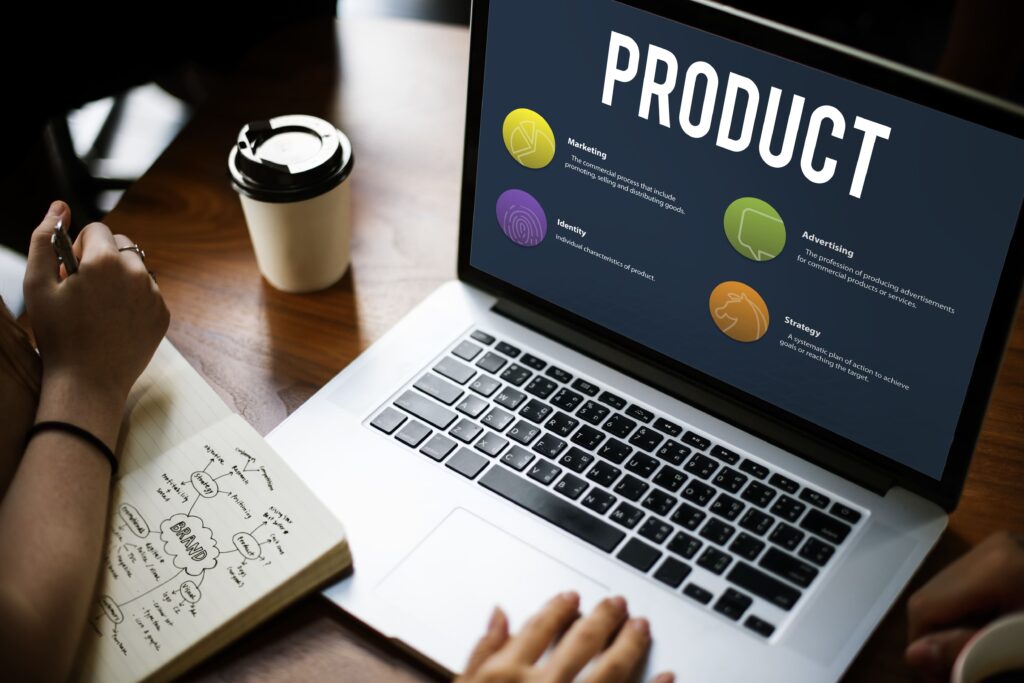Brand nostalgia is powerful, but it can also turn devoted customers into outspoken critics if it is broken without a strong brand consistency plan. This was the outcome of Cracker Barrel Old Country Store’s 2025 attempt at a comprehensive restaurant renovation and rebranding. Instead of spurring expansion, the endeavor caused stock volatility, political commentary, and customer backlash, which compelled the business to halt renovations and switch back to its previous logo.
The Cracker Barrel story is more than just a headline for business process managers, corporate branding executives, franchise owners, and crisis communication experts; it serves as a warning about what not to do and a reminder of how important customer trust and brand alignment are to any change in branding, logos, and much more.
Cracker Barrel’s Rebrand: From Makeover Ambitions To Customer Backlash
The new Cracker Barrel logo
Although the implementation of Cracker Barrel’s transformation plan under the new leadership showed a sincere attempt to reverse traffic declines, it was not without risk.
A transformation plan to reverse declining traffic, down 16% since 2019, was announced by Julie Felss Masino, the company’s new CEO, in mid-2024 (formerly Taco Bell & Starbucks) (AP News, 2025).
Some of the strategies were:
- New menu items, like Shepherd’s pie with hashbrown casserole.
- Remodels of restaurants that feature simpler antiques and lighter interiors.
- A brand logo update to better suit audiences who are accustomed to using digital platforms.
Early renovations initially performed well in a few stores. Strong online opposition was raised, however, by the concurrent redesign of the logo that eliminated the iconic barrel, the man known as “Uncle Herschel,” and “Old Country Store.”
Business executives have a clear lesson to learn: Significant rebrands necessitate phased rollouts. Trying to update a brand’s visual identity and in-store experience at the same time may drive away devoted customers who think of a brand as reliable.
Why The New Logo Sparked Outrage Among Loyal Fans
The old Cracker Barrel logo
Logos are strong symbols because they stand for emotional ties, heritage, and trust. These associations were abruptly disrupted by Cracker Barrel’s redesign.
According to AP (August 2025), the new Cracker Barrel logo (gold background, simplified text) was criticized for being “too generic” and “lacking character.”
Sentiment analysis on various social media platforms revealed consistent themes:
- Loss of heritage identity.
- Sentiment of cultural dilution.
- Concern that Cracker Barrel will turn into “just another chain”
Not only were customers displeased, but it also tapped into the emotional brand loyalty that Cracker Barrel had built up since 1969 through Americana décor, rocking chairs, and nostalgia for comfort food.
According to industry research, a sizable portion of consumers quickly switch brands after having a bad experience, so maintaining customer trust and brand consistency is essential for retention. The “single tipping point” was the alteration to Cracker Barrel’s logo.
Value for executives: Companies must safeguard core brand equity when implementing logo redesigns or brand identity refreshes, particularly when nostalgia is a component of the value proposition.
How Public Pressure And Political Reactions Forced A Logo Reversal
The crisis was intensified when what started as a branding dispute quickly turned into a political and financial problem.
Following public criticism of the rebrand by Donald Trump and Donald Trump Jr., who framed it as cultural dilution, the outcry spread beyond social media.
Cracker Barrel declared that it was going back to its previous logo on August 27, 2025. In a few hours:
- The stock price surged 8% to $62.33 (AP, August 2025).
- The reversal was hailed as a “course correction” by investors.
While branding specialists pointed out that the rollout sequencing was seriously flawed, analysts such as Thomas Murphy of Clark University referred to it as a “positive course correction.”
For businesses, this emphasizes that brand errors now cause more than just marketing; they also lead to social divisions, political debates, and financial market responses.
Insight: External amplification channels, such as politics, investor sentiment, and social media, must be taken into account when planning a crisis.
The Suspension Of Restaurant Remodels: A Costly Aftershock
The backlash against the logo caused a chain reaction that interfered with Cracker Barrel’s larger modernization initiatives.
- After customers criticized the updated appearance (brighter lights, fewer antiques, modern seating), Cracker Barrel announced on September 9, 2025, that it was halting restaurant renovations.
- In the beginning, 25–30 remodels were scheduled for fiscal year 2025. Before the stop, only four test sites were finished.
- “We heard clearly that the modern remodel design does not reflect what you love about Cracker Barrel,” the company acknowledged.
- Despite some encouraging comments from customers, the logo controversy and vocal opposition worked together to stall development.
This is a warning about how one unsuccessful branding campaign can put a stop to other strategic initiatives, resulting in lost capital investments, strained supply chain relationships, and employee misalignment.
Lessons In Brand Consistency: What Cracker Barrel’s Missteps Teach Us
Cracker Barrel Old Vs. New Logo
The failures of Cracker Barrel’s rebranding serve as an example of why transformation needs to be guided by consistent branding.
- Sequence Is Important: Walmart’s 2008 rebranding demonstrated how to pace changes by updating the store first, then the logo. Cracker Barrel took the opposite action.
- Heritage Matters: Traditional brand storytelling is valued by consumers. If you remove iconic elements too quickly, loyalists will become irate.
- Data-driven Branding Is Important: According to research, businesses that incorporate customer analytics into their branding and marketing frequently outperform their peers financially. Its nostalgic base was underestimated by Cracker Barrel.
- Crisis-readiness Is Important: Rather than proactively managing narratives, the company responded defensively when backlash struck.
External messaging, customer expectations, and internal teams are all in line with a solid brand consistency strategy. Without it, resistance causes even well-meaning innovations to fail.
Why consistent branding is important: Brand consistency fosters long-term loyalty, market credibility, and customer trust in today’s fiercely competitive marketplace. Consistent branding across all channels can boost revenue by up to 23%, according to research by Lucidpress (2023). This means that every logo, redesign, campaign, or communication must feel related to the brand’s core identity, according to executives and BPM leaders. Even daring innovations run the risk of appearing fragmented or inauthentic without that alignment.
Crisis Communication And Reputation Management In The Hospitality Industry
Since brand disruptions in the restaurant and hospitality industries involve highly visible, emotionally charged experiences, they frequently turn into viral case studies.
- A brand challenge can turn into a reputation crisis when there is inadequate crisis communication, as demonstrated by the Cracker Barrel case.
Typical dangers that are evident in this instance are:
- Reactive answers as opposed to narratives that are proactive.
- Burying the announcement of the logo in a menu press release, thereby losing control over the rollout narrative.
- Letting outside political opinions control the discussion.
According to major surveys, a significant percentage of consumers purchase from companies they trust to “do what is right” (Edelman), demonstrating that trust is a commercial multiplier.
The lesson is straightforward for leaders in the hospitality industry: Any change to a brand’s identity necessitates a crisis communication plan that concurrently addresses investor confidence, political risks, and social sentiment.
How MetroMax BPM Strengthens Branding, Crisis Strategy, And Customer Loyalty
The Cracker Barrel case demonstrates how poorly handled change can impede progress. At MetroMax BPM, we combine business process management and branding expertise to help organisations modernise their operations without compromising trust.
- Brand Consistency Audits: To guarantee alignment across digital and physical platforms, we evaluate your current branding, customer touchpoints, and communication channels.
- Strategic Rollout Planning: Our BPM framework makes sure that new projects, like menu launches, remodels, or logos, are planned in a way that minimizes negative reactions and maximizes positive ones.
- Frameworks for Crisis Communication: We create crisis response playbooks that assist businesses in taking back narrative control in a matter of hours rather than weeks.
- Customer-Centric Rebranding: We understand and determine the heritage components that customers value most through sophisticated data analytics, making sure that innovation doesn’t turn off your devoted customer base.
- Operational Synergy: To carry out transformation strategies with ease, we link the supply chain, marketing, and operations teams.
Business executives can safeguard brand equity, create enduring customer loyalty, and innovate with confidence when they partner with MetroMax BPM.
Final Comments
A crucial reality is highlighted by Cracker Barrel’s remodel suspension and logo backlash: branding without strategy and consistency is chaos. This case offers a road map of potential pitfalls for experts in reputation management, brand evolution, and business process management.
Change doesn’t have to be a crisis if you have the right partner. MetroMax BPM gives companies the ability to strategically change, safeguard client loyalty, and prosper in cutthroat marketplaces.












